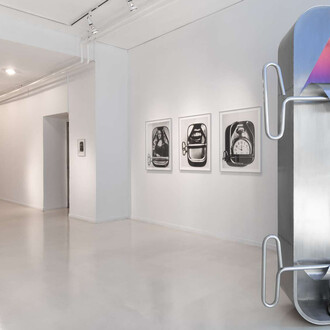Boris Lurie was the avant-garde incarnate. NO!art, the movement he founded with Sam Goodman and Stanley Fisher in 1959, was a reaction against what they viewed as the debased avant-garde of Abstract Expressionism and its social and political dis-engagement, a resistance that would become all the more strident with the rise of Pop Art. NO!art insisted that art again address the real world; it called for an art dealing with difficult truths, such as imperialism, racism, sexism, and nuclear proliferation, and leading to social action.
Lurie’s highly controversial work, sometimes combining imagery deriving from the Holocaust with samplings from popular culture, advertising, and girlie magazines, alienated critics and curators and was ignored by the art establishment. Lurie deplored what he called the “investment art market,” and he resisted its blandishments at every turn, rarely showing his art after the seventies and almost never offering it for sale.
During the period 1959–1964, NO!art became an important impetus for artists who would later become famous, such as Allan Kaprow (1927–2006), Yayoi Kusama (1929), Jean-Jacques Lebel (1936), Michelle Stuart (1933), Erró (1932), Wolf Vostell (1932–1998), and others. One of the initiators and founders of the movement is a former resident of Riga, Boris Lurie, who, together with Sam Goodman (1919–1967) and Stanley Fisher (1926–1980), held politically and socially intense exhibitions in their March gallery in New York. In 1963, when Boris Lurie meets an art collector and gallerist Gertrude Stein, she founds her gallery and continues working with NO!art artists for a while. Even the names of exhibitions are like the manifestos that “shout for everyone to hear” and demand to be involved: Vulgar Show, Involvement Show, Doom Show, NO! Show, NO! Sculpture (Shit) Show.












